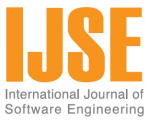Vol 9 No.2
Papers
ABSTRACT The Earn Value Analysis (EVA) with factors like EV (Earned Value), CV (Cost Variance), BV (Budget Variance), SV (Schedule variance) are useful in any project management. This paper shows how EVA can be useful for Software Project Management (SPM) for making rescheduling, target scheduling of software project and in Software Cost Estimation (SCE). We propose Software Project Management (SPM) using 3DBGAEVA (3 Dimension Breeder Genetic Algorithm Earn Value Analysis) approach. It is used to optimize the scheduling by some objectives and constraints given by EVA and Software Project Scheduling Problems (SPSP). Various results with different crossover, selection and mutation with real valued chromosome are studied for getting different costing and schedule by proposed 3DBGAEVA approach. The skill development principles by training and learning method are also used to get an effective schedule and reschedule.
ABSTRACT The Component-Based Software Development achieves software reusability by creating software systems from the current software rather than building from scratch. Successful reuse requires high quality components in a repository with suitable description, classification and retrieval mechanism. The component selection process consists of picking up a component from the given set based on some quality attributes. Using the fuzzy clustering techniques, the similar components are grouped together for choosing the best candidate. The main goal of this paper is to propose a select the most optimal components from the retrieved set of components. Fuzzy clustering plays a vital role in software component selection. This paper proposes a fuzzy relation based fuzzy clustering technique with the following advantages: i) It eliminates the need of choosing a particular similarity function. As choosing the similarity measure was very crucial in fuzzy clustering also the results may vary for different similarity measures even for the same set of data. ii) With the proposed technique multi-dimensional data numerical as well as categorical can be handled. iii) The prior specification of the number of clusters is not required. iv) The components are clustered based on multi-features rather than considering one or two features. The algorithm is validated on a case study.
ABSTRACT One of the important component of software quality assurance in software development is testing. This is because testing software consumes over 50% of the development effort. To minimize development time, porting software applications has become a necessity which has not really improved testing activities – Software porting is the process of making necessary changes to an existing application running on an operating system and hardware architecture, with the aim of enabling the application to run on another operating system and hardware architecture. The testing activities carried out during software development or porting are adhoc without well established guidelines. As such, several testing models has been established by researchers and establishments such as IEEE and ISO to guide and ease testing activities. This paper reviewed seven (7) different testing models and approaches used during software development or porting. The strengths and weaknesses of these testing approaches are enumerated and evaluated. After evaluation, the limitation of each testing technique are pointed out with the aim of overcoming the limitations in future work.
ABSTRACT This paper outlines a framework for specifying software requirements using semi-structured representation schema based on XML. Requirement Engineering demands a granular level of requirement specifications with key objectives, design constraints and relevant artifacts. There exist some structured approaches, but still these are not complete and do not have open formats that describe requirements of a system with its artifacts. This paper introduces SSRS (Semi-Structured Representation Schema), an XML-based adaptable specification approach for the structural representation of functional and non-functional requirements (NFR). The approach is a well-organized way of managing requirement metadata and comprehensive artifacts of requirements like status, priority, version, stability, elicitation source etc. The paper incorporates a case study of online assessment system for validating the instances with SSRS.
